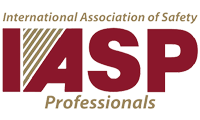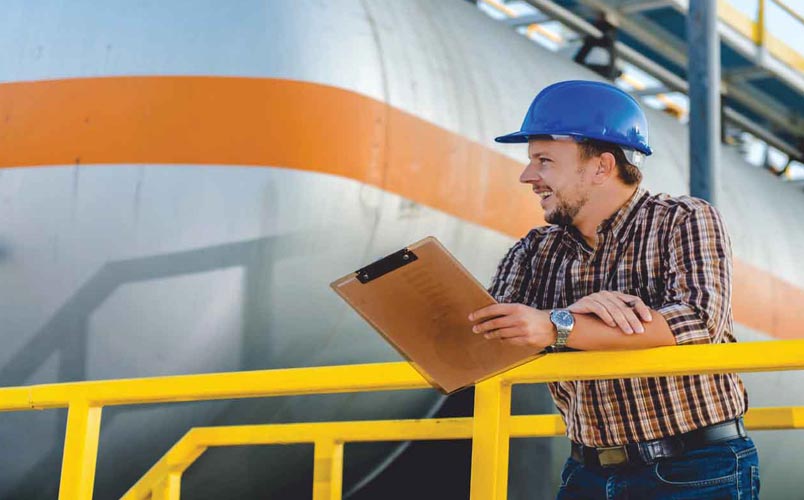No matter how frequently or infrequently you work at heights, safety must be your top priority. A single error is sufficient to transform a routine work task into a fatality. Falls are debilitating. Falls can be fatal. You must always be prepared to protect your employees from potential danger. Consider the following ten tips if your employees work at heights.
Guidelines For Working At Height
Working at heights can be hazardous, and it is essential to adhere to safety protocols for your protection and the protection of others. To help keep everyone safe while working at heights, we’ve compiled a list of ten safety tips for the workplace.
Whether you’re using ladders or scaffolding equipment to perform work from a height, these guidelines will help ensure that the job is completed effectively and safely. Continue reading for our top ten safety tips for working at heights!
1. Use Rails
When possible, utilize rails. Passive protection is the simplest way to ensure the safety of your employees and achieve compliance, as there is nothing they must do to ensure their safety (aside from staying within the rails… if your employees are climbing outside of safety railings, you have more serious issues to address!).
Rails can be constructed on-site by carpenters (as long as they meet OSHA requirements) or prefabricated and installed by a manufacturer. Depending on your needs, prefabricated railings can be permanently installed or portable. Rails are the most accessible type of fall protection once they have been installed, regardless of the type used.
2. Select Appropriate PPE
If you use Personal Fall Arrest Systems (PFAS), you must ensure you choose the proper equipment. Regardless of price, all full-body harnesses that meet ANSI standards will perform identically. Nonetheless, the price difference buys you something. Sometimes it’s just a name, but other times you’re gaining or losing functionality, such as additional D-rings, fireproof material, or arc-safe design.
Occasionally, a more expensive harness is simply more expensive because it was designed to be more comfortable. Conduct research and determine your needs. If you have workers who weld at heights, a standard nylon harness will likely not suffice. Perhaps Kevlar is the optimal material. And remember your workforce.
Perhaps comfort is not your primary concern, but it will be much easier to gain the cooperation of your employees if they are comfortable wearing the equipment. However, comfort is not the only factor to consider. Harnesses are not universally sized. Ensure that your employees can adjust their harnesses to fit properly.
Additionally, lanyards must be appropriately selected. Depending on the working height, a 6-foot lanyard with a deceleration device will not protect your employee. Alternatively, a retractable lanyard may be required. Each situation is unique, so you must evaluate the working conditions and the task to provide your employees with protective equipment.
3. Observe Your PPE
Employees can use as much equipment as they like, but if they don’t inspect it, it could fail at any time. While harnesses and lanyards must be periodically inspected by a Competent Person (someone with the knowledge to identify the hazard AND the authority to correct it), they must also be inspected by the user before each use.
For this to occur, your users must know what they’re searching for, what is acceptable and what is not, and what to do if they encounter a problem. The inspection should be exhaustive but need not be time-consuming. Nonetheless, this brief pre-work examination could save a life.
4. Be Sure You Are Aware of Fall Distance
It is useless to wear fall protection equipment if you can reach the lower level before it activates. This may seem like a statement of “common sense,” but you’d be surprised at how many people appear to lack “common sense.” On a construction site or in a plant maintenance crew, it is not uncommon to see a worker 10 to 12 feet off the ground wearing a 6-foot lanyard with a deceleration device. At first glance, it may seem like it should work, but there are several reasons why it won’t.
First, you must account for the deployment of your deceleration device by adding 3.5 feet to the distance. Therefore, the lanyard is already 9.5 feet long. This is bad news unless you are under 6 inches tall. Your actual fall distance must account for the length of your deployed lanyard, the length of your body below the D-ring, and any sag in your harness and anchor system. Before using a 6′ lanyard with a deceleration device, you should have a minimum of 18.5′ lanyard length.
5. Ensure An Acceptable Anchor Point Is Selected
Grandpa exclaimed in The Lost Boys, “We have rules!” He was referring to drinking his root beer and not removing the label from the TV Guide, but he could have just as easily been discussing anchor points. If you randomly visited a construction site and observed the anchor points in use, you might conclude that there are no rules. PVC pipe? Non-anchoring. Aesthetic steel? Non-anchoring.
In actuality, many more things will NOT be acceptable anchor points than will. Why? Because the anchor point must support not only the weight of the person attached but also 5,000 pounds per person attached (or a factor of 2 if you have an engineer determine your anchor).
Numerous fixtures will not be able to withstand these forces. Structural steel with a suitable beam clamp? Sure. A prefabricated roofing cart or other prefabricated anchors? Certainly, if installed correctly. To use something as an anchor point, you’ll need documentation and/or an engineer’s approval.
Ensure you choose the safest methods for working at heights (Scaffold Vs Lift Vs Ladder)
Fall protection solutions are not one-size-fits-all in the same way that harnesses are not. In certain circumstances, a scaffold is an optimal solution for working at heights. If so, you will likely be able to equip them with rails, which will make fall protection much simpler to implement. On occasion, scaffolding will be impractical, and you will be required to use a lift.
Depending on the type of lift, a harness and lanyard may or may not be required (and properly tie them off). On occasion, you will be required to use a ladder, at which point the fall protection requirements become more complex. In the end, assuming a ladder will suffice regardless of the situation (a lift, a scaffold, or any other means of elevation) is a recipe for disaster. Evaluate the situation carefully and select the appropriate piece of equipment for the task at hand.
7. Utilize Ladders Correctly
Do not assume you are competent simply because you have a ladder at home. In actuality, the safest way to live on this planet is to always assume ignorance. In most instances, you will be correct! Many industrial and workplace accidents involve ladders because their use is taken for granted. Ladders are familiar.
You use them to hang your Christmas lights, paint your living room, replace that annoying high-hat bulb, and clean your gutters. We employ them so frequently that we must know what we’re doing, as we’ve never been injured! Except for the time you accidentally closed the A-frame on your hand. Or that time the ladder slipped out from under you. Or a tool fell from the top of the ladder and struck you. Or that one time…oh well.
Ladders are dangerous. When used improperly, they are EXTREMELY dangerous. First, ensure that ladders are the optimal tool for the task at hand, and then instruct your employees on how to use them properly. 3′ extension, 4:1 ratio, three contact points, and secure.
If you do not know what this means, you may not know how to properly use an extension ladder. You’re familiar with the warning label on a step ladder that reads, “Do not stand on this step or higher.” If you believe that means you can go no further, you may not understand how to use a step ladder. Provide your employees with the proper training so they can use the tools they are given effectively.
8. Be familiar with roofing regulations
Roofing requirements are among the most misunderstood regulations. Not only are roofers frequently unaware of what is required of them, but many contractors working on roofs who are not roofers mistakenly believe that certain fall protection methods are available to them when they are not. Only roofers performing roofing work are permitted to have warning lines at 6′ with a monitor (and 10′ back from the edge of mechanical equipment traveling in that direction).
Take note of the phrase “with a monitor” in the preceding sentence. There is NO circumstance in which a warning line is an acceptable form of fall protection in the absence of a dedicated monitor. A few situations permit a monitor without a warning line (for example, low-slope roofs less than 50′ in width), but none permit a warning line without a monitor. Additionally, take note of the phrase “dedicated monitor” in the preceding statement.
Monitors must not have responsibilities that would detract from their monitoring duties. Do you see where this is leading? There are numerous nuances to roofing regulations. If you are one, ensure that you are familiar with the applicable regulations and requirements.
9. Ensure Proper Lift Use
There are numerous ways in which a lift operator can make a mistake, so I will not discuss lift operation here, but we must discuss fall protection with lifts. Any person in a boom lift must be properly secured at all times and all heights. This is a point that is often overlooked. In addition to requiring that they be secured to the engineered anchor point designed with the lift, “properly tied-off” specifies that they cannot wrap their lanyard around the rails. At the height at which they are working, they require a lanyard that will protect them (see fall distance above).
With scissor lifts, the situation is a bit different. There is no regulatory requirement for tying off a scissor lift; however, the site you are working on or the owner of the facility/project may require it.
However, if you forget to close your gate or secure your chain, you will no longer be protected by the rails and will violate fall protection regulations. It’s that easy. Additionally, keep your feet firmly planted on the platform. Each of them
Trains, Trains, Trains
If you want your employees to work safely at heights, you must provide them with the appropriate training period. The conclusion. Not only is training required by law, but there is too much room for error and confusion when untrained individual attempts to protect themselves at heights.
Falls are the leading cause of death in construction every year. Falls are a leading cause of death in other industries as well. They are lethal. Most often, there are no second chances. Provide your employees with the safety knowledge they require.
Working safely at heights is not a matter of luck. It is not something that can get by chance. Working safely at heights requires planning, education, and resolve.








